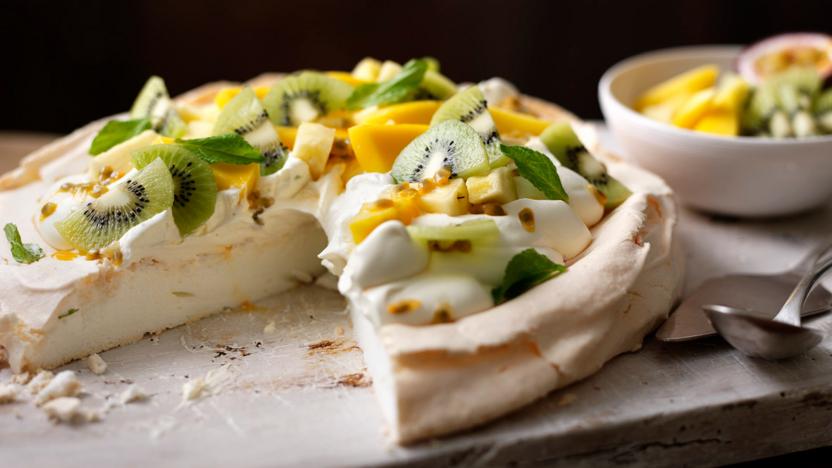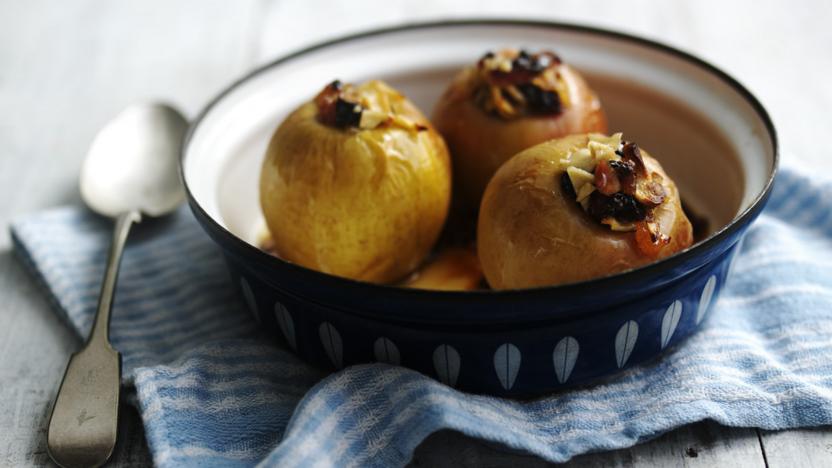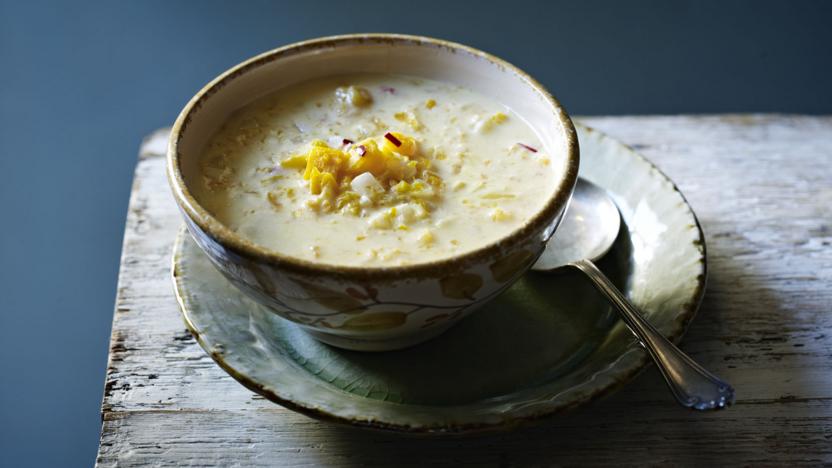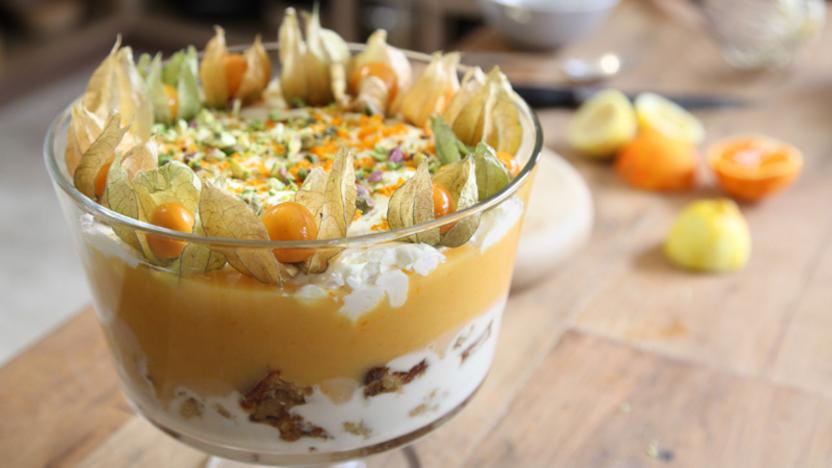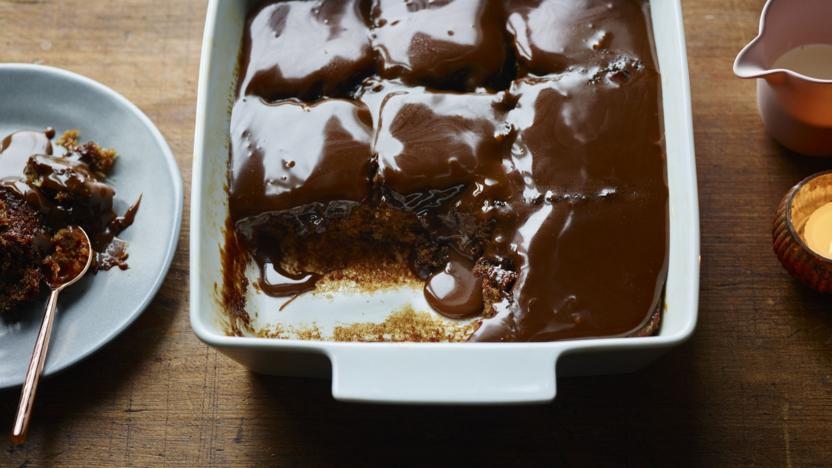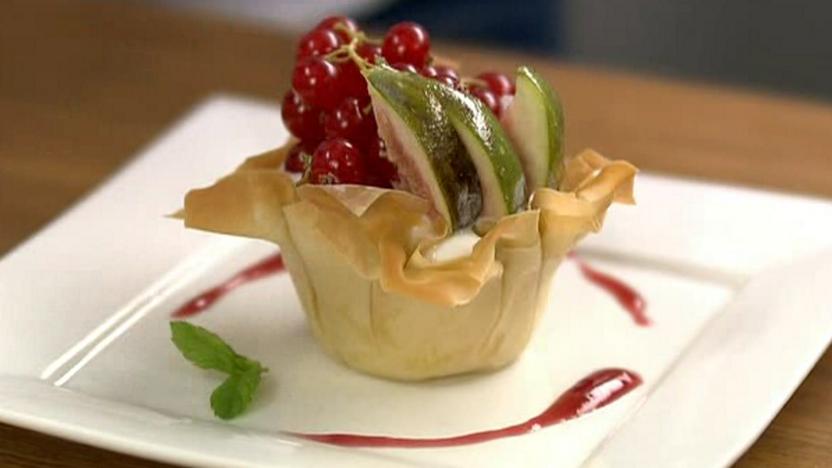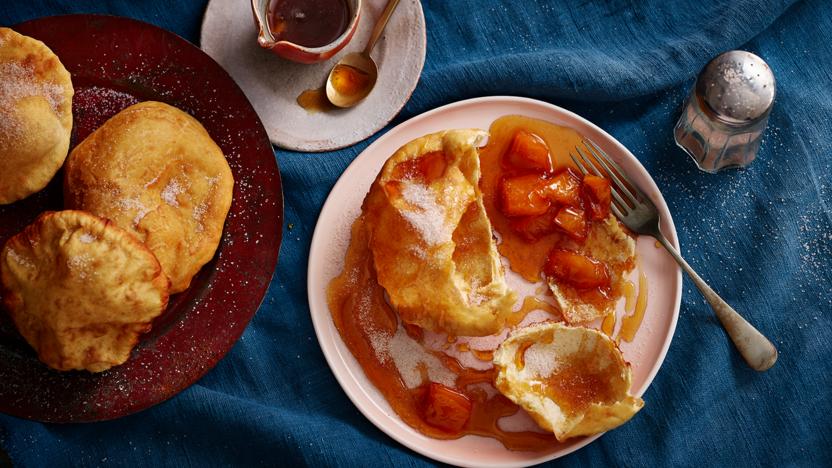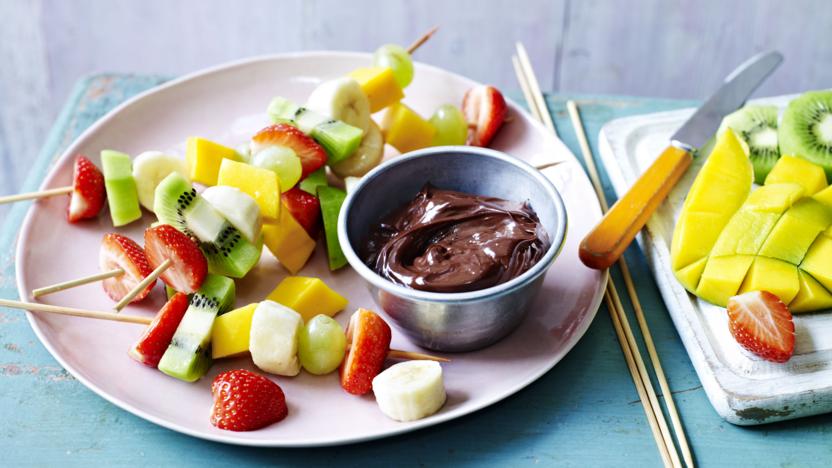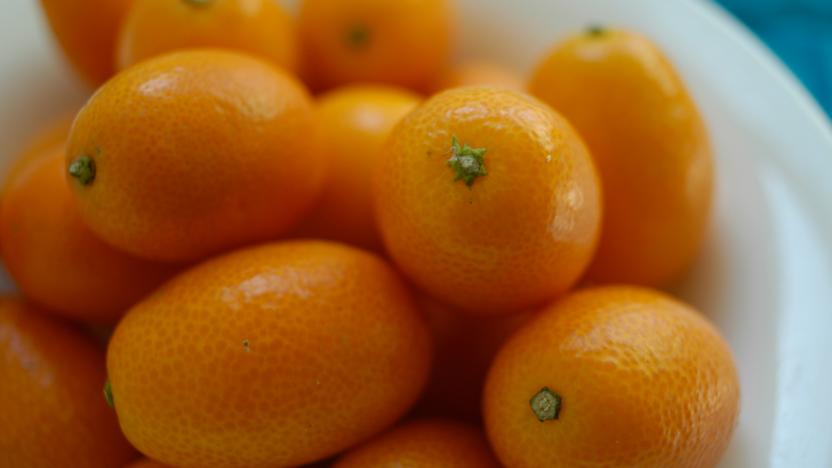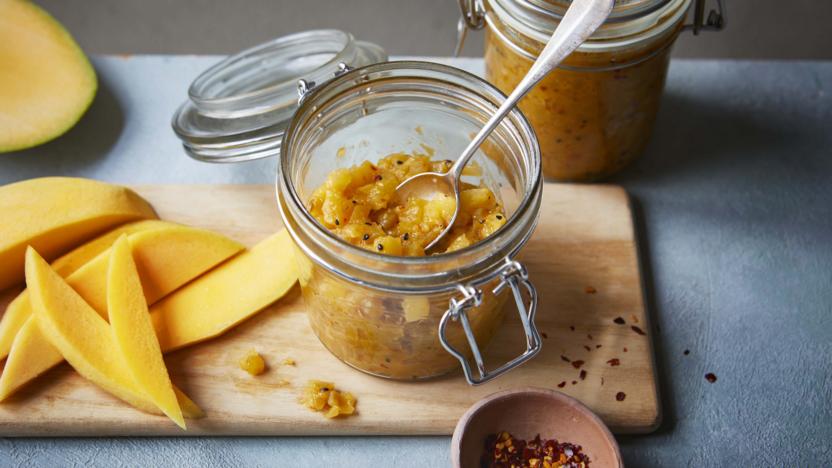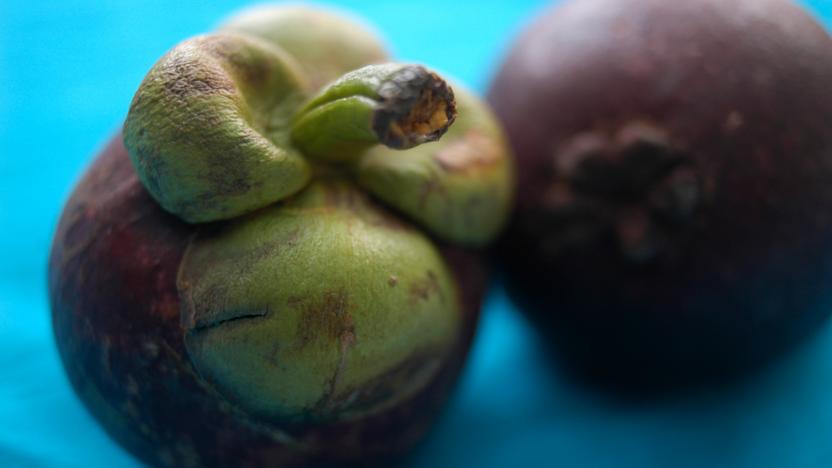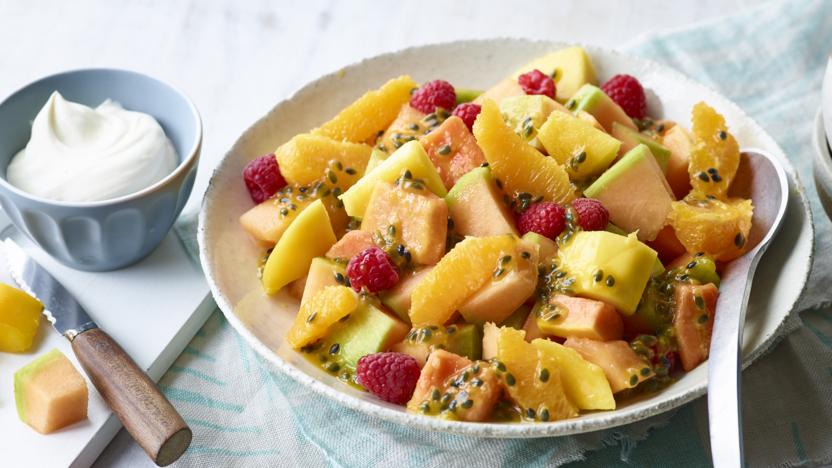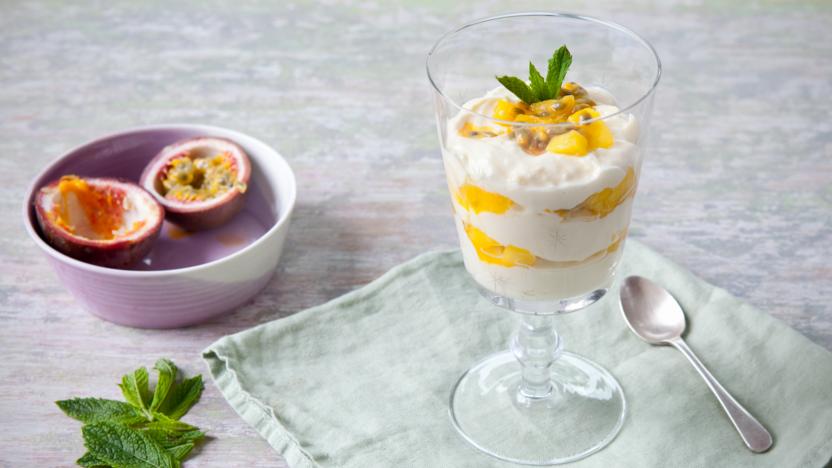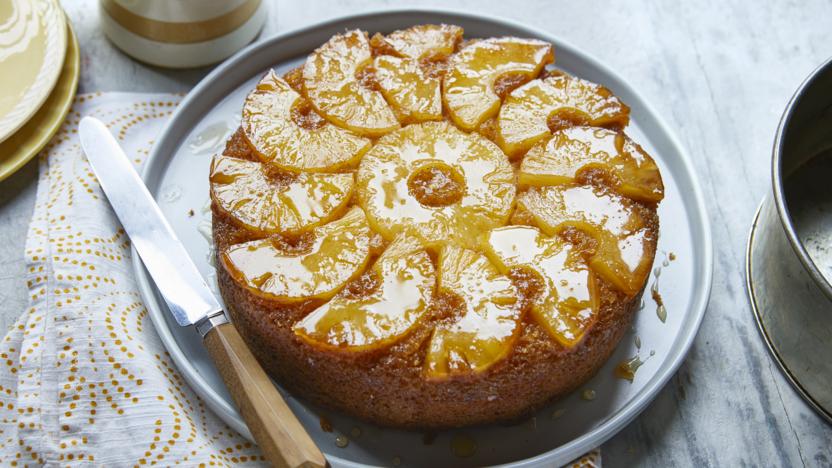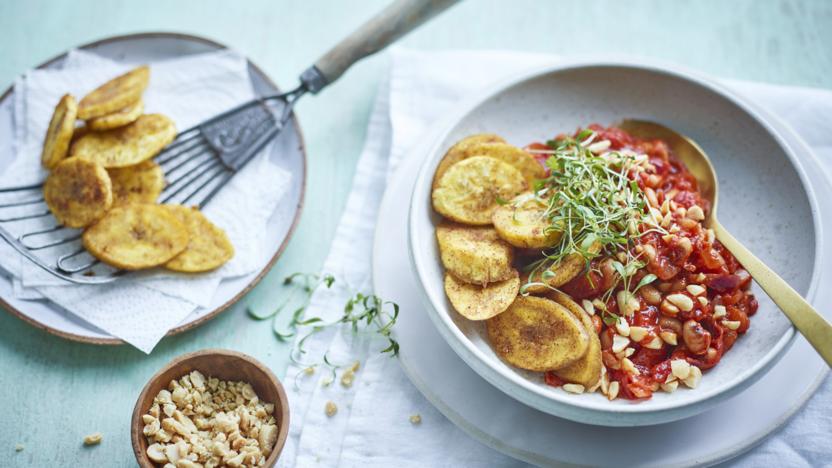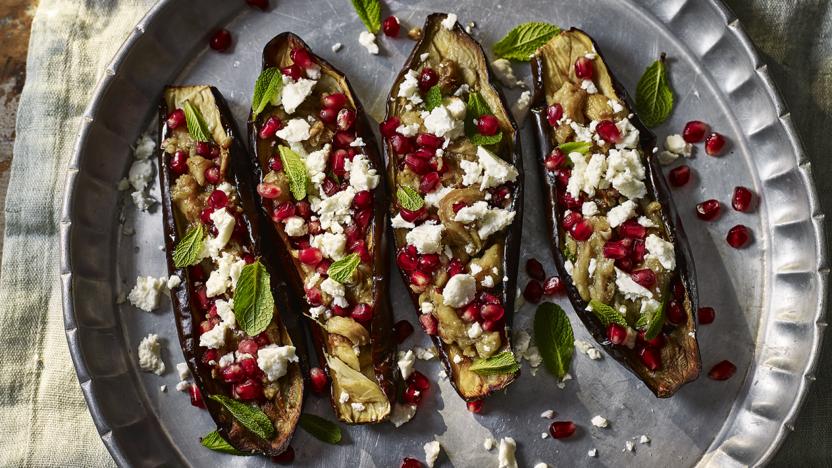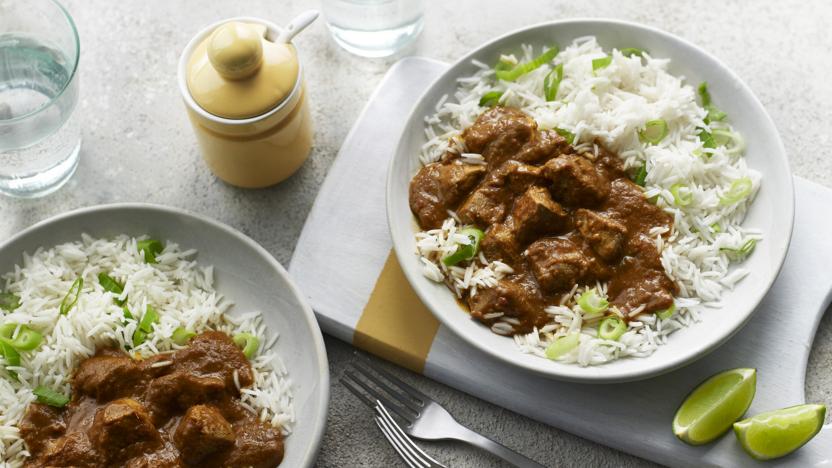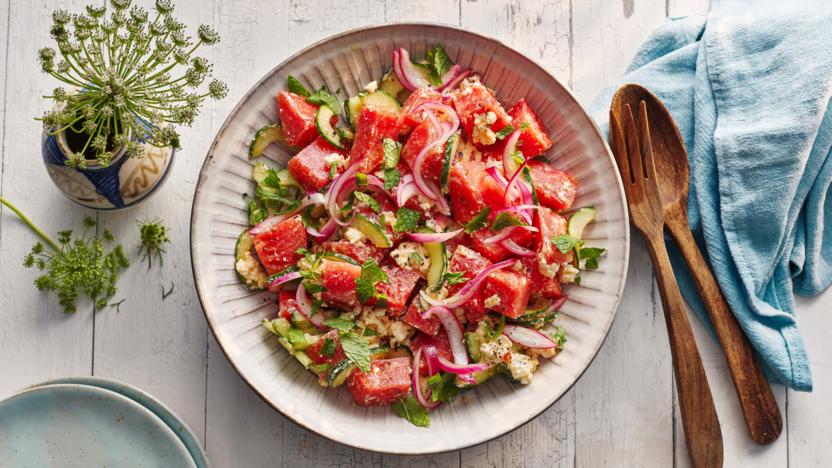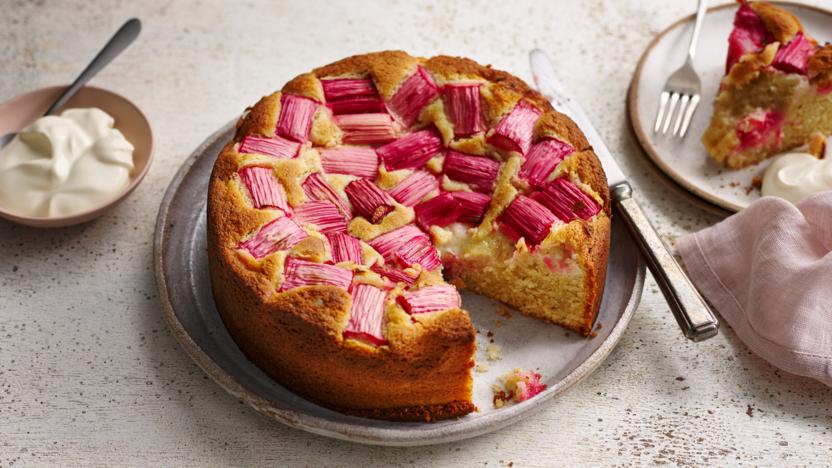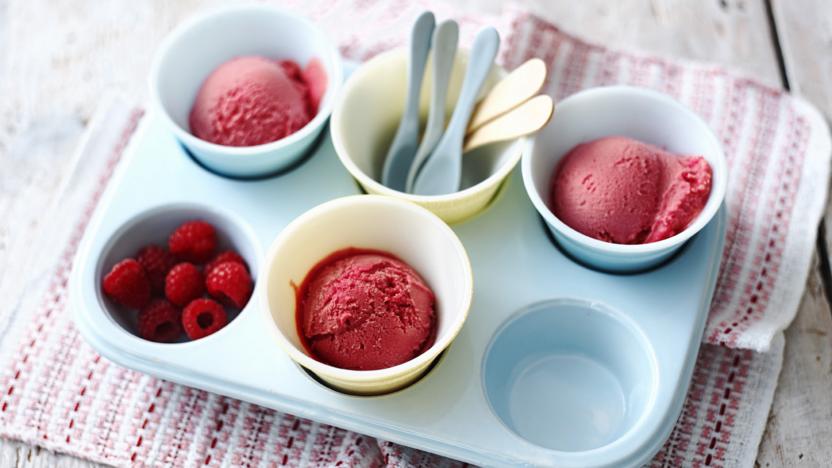Exotic fruit recipes
Exotic fruit here refers to a wide variety of fruits from the tropics, sub-tropics and more temperate climes. The group includes pineapples, mangosteens, bananas, guavas, kiwi fruit, loquats, dates and tamarillos. (See individual fruit pages for in-depth descriptions.)
Get perfect results every time with this quick and easy pavlova recipe. Top with whatever delicious fruits you have to hand.
More exotic fruit recipes
Buyer's guide
Always check exotic fruit carefully before buying: look out for softened patches that can develop into a bruise with ripening. Where possible, sniff exotic fruit: firstly, if it is a fragrant fruit, its smell will indicate ripeness; and secondly, some fruits, such as pineapples or lychees, will smell slightly fermented if they’re fermenting (unseen) inside. Choose plump, fresh-looking fruit that feels heavy for its size. If it looks dull, shrivelled or just not quite right, don’t buy it.
Storage
The majority of exotic fruit is best kept at room temperature to preserve its fragile texture and delicate flavour, but it needs to be eaten within a day or two of purchase. See individual fruit pages for fruits that benefit from chilling. Once an exotic fruit is cut, it should be covered and refrigerated.
Preparation
If you are unfamiliar with an exotic fruit, it is best to eat it very simply initially to fully understand its texture and flavour. It is also worth looking at recipes from the countries where it is widely grown. Jamaica, for example, is a good source for breadfruit recipes, and Iran has wonderful pomegranate dishes. Bear in mind that many exotic fruits have different names according to the country they’re grown in: sapodilla, for instance, is known as chico in India, where it is very popular.
